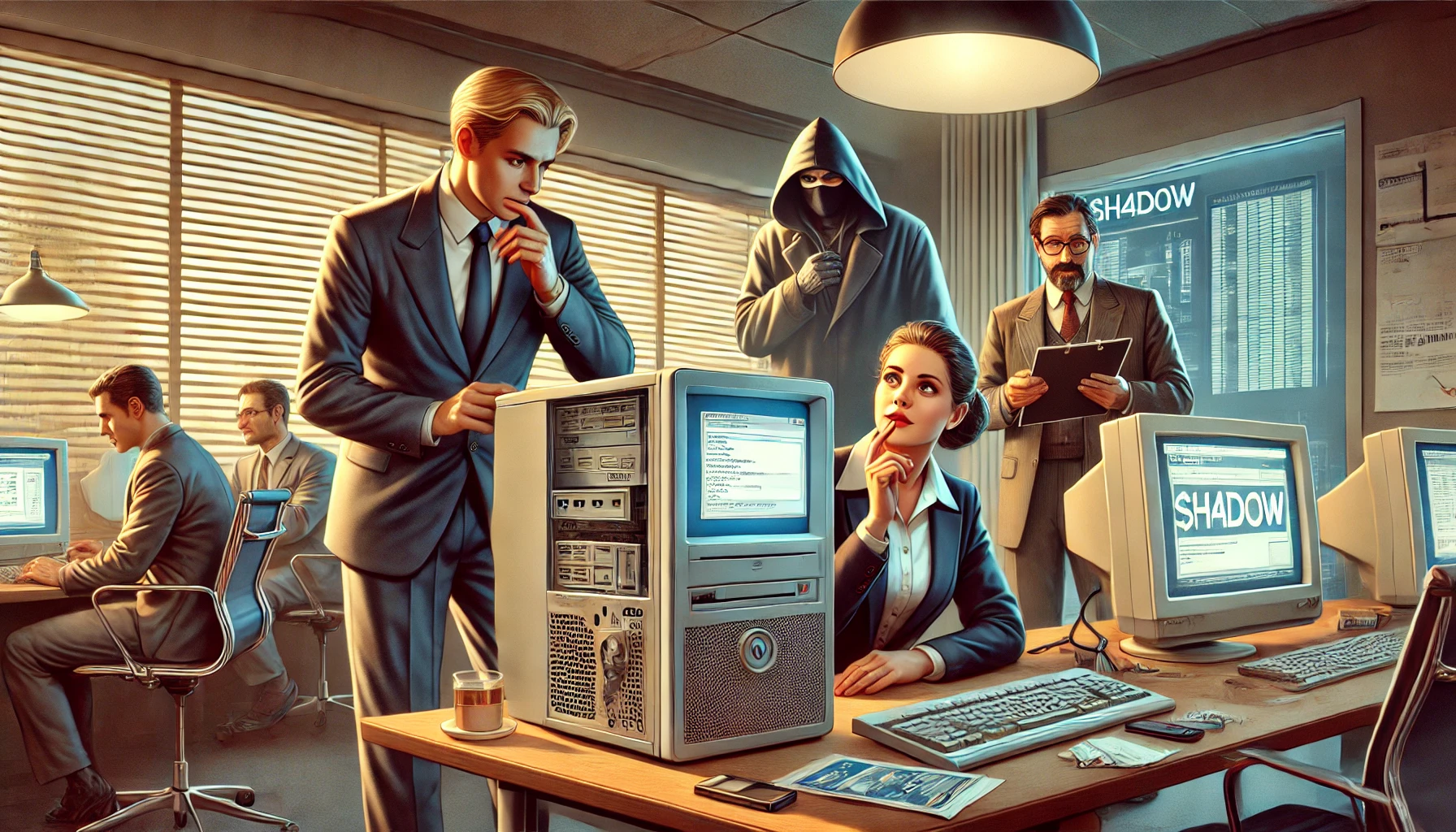The Haunted Office
15 July 2024

In the dimly lit room of an old, brick-walled basement, a collection of outdated technology lined the shelves. A rotary phone, a typewriter, and a bulky VHS player were among the relics of a bygone era. Each object, covered in a thin layer of dust, whispered stories of the past to anyone willing to listen. These old tech objects, once cutting-edge, now seemed quaint and obsolete. But within their silent narratives lay lessons of great importance for the modern world, particularly in the cybersecurity domain.
The haunted office
The story begins with John and Jane Smith, two dedicated employees at DeLight Inc., a thriving corporation known for its innovative solutions. John and Jane were typical corporate individuals, embodying the everyman and everywoman of the business world. They relied heavily on their company’s technology to perform daily tasks, from managing client communications to handling sensitive data.
One rainy afternoon, as Jane was clearing out an old storage room, she stumbled upon a forgotten closet filled with outdated devices. Among them was an old desktop computer, its once sleek design now a relic of early 2000s innovation. Curious, Jane powered it up, listening to the familiar but now archaic hum of its hard drive spinning to life. The ancient machine took her on a trip down memory lane, reminding her of the early days of her career when this very computer was the pinnacle of office technology.
As Jane marveled at the nostalgia of the old computer, she failed to notice a shadow lurking in the corner of the room. This shadow, however, was not an ordinary one. It was $h4d0w, a notorious hacker known for exploiting vulnerabilities in outdated systems. $h4d0w had been lurking around DeLight Inc., waiting for the perfect opportunity to strike. The moment Jane powered up the ancient computer, she inadvertently opened a gateway for $h4d0w to infiltrate the company’s network.
The trickster’s play
$h4d0w, thrived on finding cracks in the armor of seemingly secure systems. He was a master at exploiting outdated software, knowing that these old machines often have unpatched vulnerabilities. As he gained access to DeLight Inc.’s network, $h4d0w began his mischievous work, planting malware and creating backdoors that allowed him to siphon off sensitive data unnoticed.
Meanwhile, in another part of the office, Jack Krekr, DeLight Inc.’s cybersecurity expert, was conducting his routine network monitoring. Jack was diligent, always on the lookout for anomalies and potential threats. His keen eyes soon noticed unusual activity on the network, originating from the old storage room where Jane had been earlier.
The discovery
Jack rushed to the storage room and found Jane reading files on the old computer. “Jane, we need to shut this down immediately,” he said urgently. Jane looked up, startled. “Why? It’s just an old computer. What harm could it do?”
Jack explained, “Old technology can be a goldmine for hackers. They exploit outdated software because it’s often left unpatched. The vulnerabilities in these old systems can be a serious threat to our network security.”
Jane’s eyes widened in realization. “I had no idea,” she murmured.
Jack quickly disconnected the old computer from the network and began a thorough scan to identify any potential breaches. The results were alarming. $h4d0w had indeed managed to infiltrate the network, but fortunately, Jack’s prompt action contained the damage.
Lessons learned
Later that day, Jack gathered the entire DeLight Inc. team for an important meeting. “Today, we had a close call,” he began. “An old computer, left unchecked and unpatched, nearly became the gateway for a major security breach. This incident highlights a critical aspect of cybersecurity that we must never overlook: the importance of keeping our software up-to-date.”
Jack continued, “Regular updates are not just about getting new features. They’re crucial for patching vulnerabilities that cybercriminals can exploit. Every update we skip, every outdated system we leave connected to our network, is a potential risk. We must treat software updates as a fundamental part of our cyber hygiene.”
Michel Fishblocker, played a crucial role in the aftermath of the incident. Michel was known for his no-nonsense approach to IT management, and he took this opportunity to reinforce the importance of regular updates across the company.
“From now on,” Michel announced, “we will implement a strict update policy. All software and systems must be updated promptly. I’ll also be conducting regular audits to ensure compliance. We cannot afford to leave any door open for attackers like $h4d0w.”
Michel’s resolve was clear, and his dedication to maintaining a secure network was unwavering. He knew that even one outdated piece of software could compromise the entire company’s security.
Nobody asks for old stuff
As the team at DeLight Inc. embraced their new update policy, John and Jane reflected on the wisdom hidden in the old tech objects they had encountered. The rotary phone, the typewriter, the VHS player – all had been state-of-the-art in their time, only to become obsolete as technology advanced. These objects reminded them of the continuous evolution in the tech world and the need to keep pace with change.
The old desktop computer, in particular, served as a stark reminder of the potential risks of neglecting updates. It taught them that in the digital age, vigilance and proactive measures are essential to safeguard against ever-evolving cyber threats.
Disclaimer: This story is a fiction created for illustrative purposes. Names, characters, businesses, places, events, and incidents are either the products of the author’s imagination or used in a fictitious manner. Any resemblance to actual persons, living or dead, or actual events is purely coincidental. The narrative is intended to highlight the importance of cybersecurity and does not represent any specific individuals or entities.